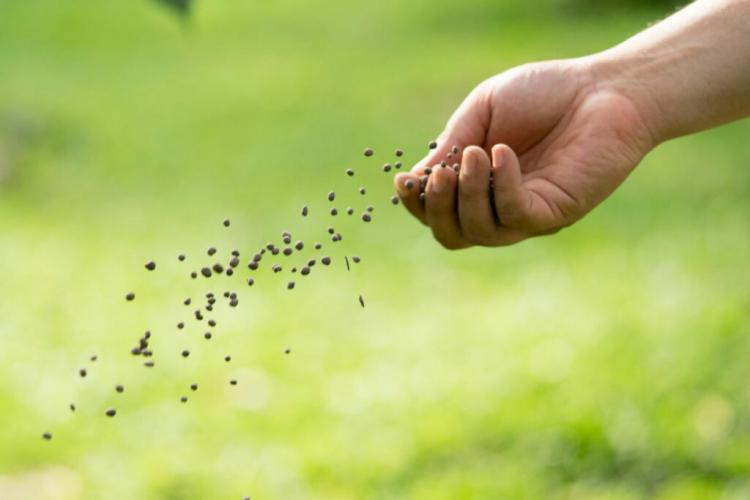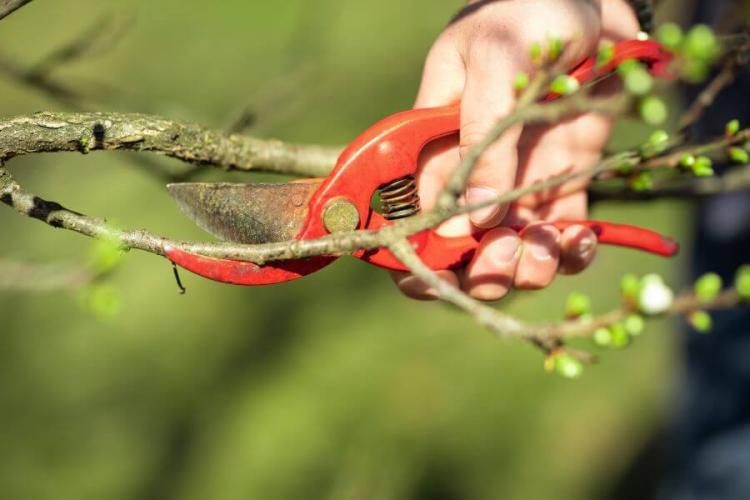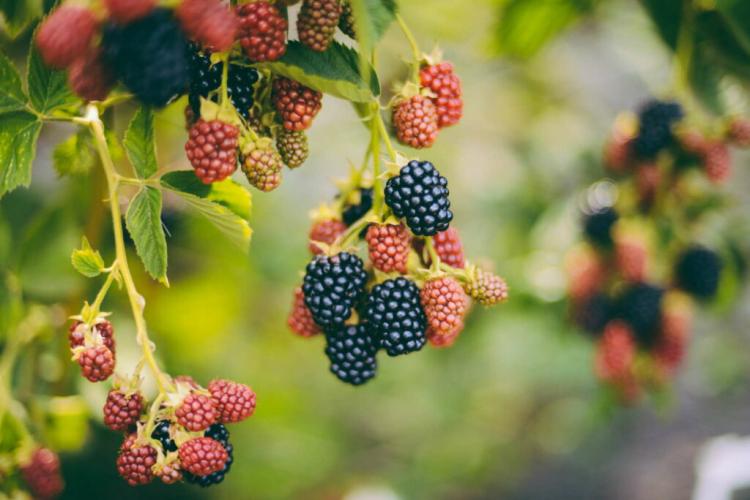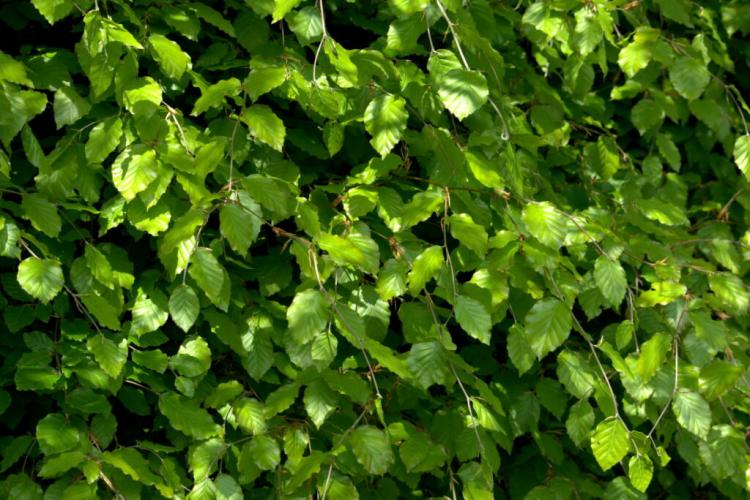Organic Fertilizer: Pros and Cons
Organic fertilizers promise a sprouting garden with a clear conscience. We take a closer look at the advantages and disadvantages of organic fertilization.
Organic fertilizers often give off an unpleasant smell but are still on everyone’s lips. The ominous brown mixes seem to be a boon to garden fertility and nature’s health. In this article, we would like to give you a definition of organic fertilizer and provide you with details about their properties, how these fertilizers work and what advantages and disadvantages they have. Then we will introduce some types of organic fertilizers and explain how you can make organic fertilizers yourself.
Definition: what is organic fertilizer?
Table of Contents
Organic fertilizers are those that contain nutrients in organically bound form. The raw materials used in them can be of animal or vegetable origin. Unlike mineral fertilizers, the plant nutrients are not in the form of salt, which dissolves quickly in the soil water but is packaged in natural structures. For plants to be able to use them, these structures must first be broken down. Soil organisms take on this task and mineralize the components of the fertilizer. That means they break them down into their individual molecular and atomic parts. The plant nutrients it contains, which were previously “built-in”, are also released again in this way. They get into the soil solution like the salt of mineral fertilizer and can be taken up again by plants to form new organic structures.
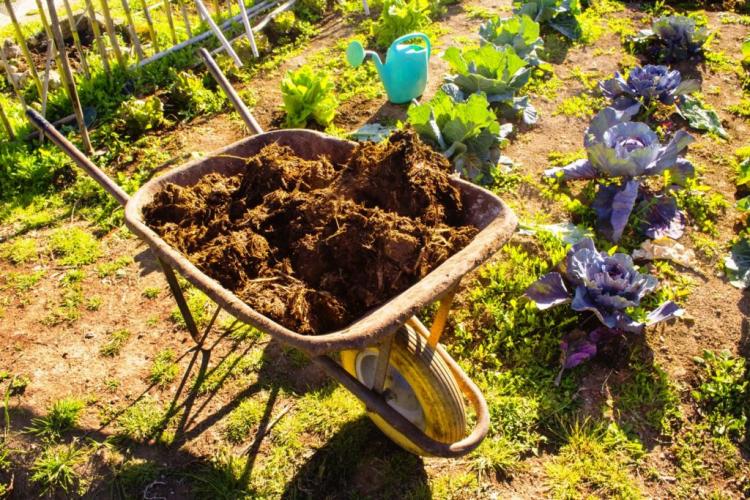
Tip: Depending on the conditions in the soil, there is another process in addition to mineralization: humification. This creates humus. Because this can also be mineralized again if the soil life is very active, the processes of mineralization and humification constantly work against each other. If the conditions remain unchanged, an equilibrium is established that determines the humus content of your soil.
Summary: what is organic fertilizer?
- The nutrients in organic fertilizers are bound in organic structures
- To make the nutrients usable, these structures must first be broken down by microorganisms
- After decomposition, the nutrients contained can be absorbed by the plants, such as those from mineral fertilizers
Organic fertilizer: extraction and manufacture
Raw materials for organic fertilizers can be various plant or animal substances. The range of nutrients and their concentration is usually decisive for the selection. Basically, all plants need the same 14 essential nutritional elements. Conversely, any fertilizer made from plants must also contain all of these nutritional elements. Animals also need these elements – and a few more – or at least ingest them with their food.
Therefore, their components and residues are also suitable for fertilization. Which raw materials are actually used is ultimately often a question of concentration: if a raw material contains a desired nutrient element only in small quantities, it is, of course, less suitable for fertilization – if fertilization is only defined as the supply of nutrients – than if it contains a large amount includes.
Tip: A fertilizer made from raw materials with a low nutrient content can also be a “good fertilizer”. To the extent that such a fertilizer contributes to the formation of humus and thus to the improvement of soil properties. These are just as important for plant growth and have a decisive influence on how effectively nutrients and water can be stored and used by plants. Since organic fertilizers fertilize the plants through the addition of nutrients and also the soil through the input of organic material, one speaks of plant and soil fertilizers.

Raw materials for organic fertilizers provide to a greater extent:
- Animal production through excrement, bone, blood, and horn products
- The food industry through unused by-products such as peel, residues from the fermentation of alcohol, and many other areas
- The waste management through recycling of organic household waste and green waste
- In the case of agriculture in some cases the wastewater management by sewage sludge
The production of fertilizers includes crushing and drying and, depending on the origin, the mixing of different raw materials from different origins. The aim is to always achieve uniform compositions and nutrient contents. Pelleted fertilizers are then pressed into their shape with a binding agent of natural origin. For the production of liquid fertilizers, it is very carefully crushed and then dissolved in water. This is last strained to get the liquid fertilizer.
Summary: extraction and production of organic fertilizers
- Organic fertilizers can be made from animal or vegetable raw materials
- The raw materials chosen for plant fertilizers contain high concentrations of organically bound nutritional elements
Effect and nutritional content of organic fertilizers
In general, an organic fertilizer acts both as a plant fertilizer – i.e. by adding nutrients – and as a soil fertilizer – by improving the soil properties. The higher the nitrogen content and the lower the content of poorly degradable substances, the greater the plant-fertilizing effect. For example, all woody parts of plants and those that contain fats or tannins are difficult to break down.
| Humus reproduction high | Medium humus reproduction | Low humus reproduction |
|---|---|---|
| Low nitrogen fertilizer (“Soil fertilizer”) |
Fertilizer with a high nitrogen content (“plant fertilizer”) | |
| Woody materials, rice husks, coconut shells | Leaves of deciduous trees, bark compost | Manure and liquid manure |
| Chopped bark, conifer needles, sawdust, straw | Green manure | Chicken droppings, biogas manure |
| Compost made from nutrient-poor material as mentioned above | Compost of mixed material, mixtures of low and high nitrogen material | Compost made from nutrient-rich material such as garden vegetable scraps, lawn clippings, and kitchen waste |
| Low nutrient input | Medium input of nutrients | Nutrient input high |
The effect of the organic fertilizer, therefore, depends on its respective composition. Other factors also have a decisive influence on the effect of fertilizer, for example, the soil temperature and moisture and the pH value. We would like to explain the partial steps of the two processes to you here only in brief. You can find more complete information on humus management in our special article.
Humification
- Mechanical crushing and mixing with the soil by larger soil organisms such as earthworms
- Delayed degradation of the organic material
- Enrichment of more and less strongly decomposed parts of the material
- Release of ingredients from degraded structures to a small extent
- Chemical reactions (oxidations) and the decomposition by enzymes of soil organisms transform raw materials in such a way that they can come together to form new structures
- In this way, the formation of dark brown to black organic compounds called humic substances
- The sum of the humic substances forms the soil humus
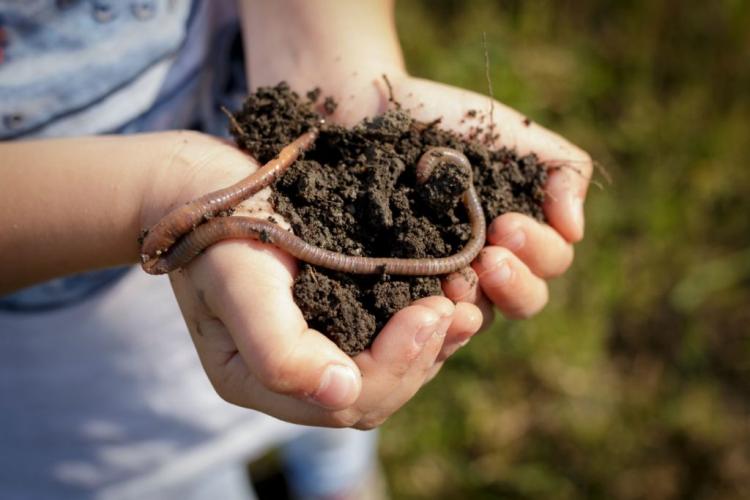
Mineralization
- Mechanical crushing and mixing with the mineral soil by larger soil organisms such as earthworms
- Degradation by microorganisms such as bacteria and fungi
- The enzymes of the microorganisms break down the organic compounds into the basic molecular building blocks. Release and further conversion of nitrogen, phosphate, sulfur, potassium, calcium, magnesium, and other plant nutrients, which can then be absorbed by plants
- Microorganisms use the building blocks released in this way to build their own body structures, nitrogen is used as an energy source. At the end of their lifespan, they too fall victim to the dismantling and remodeling processes
Summary: How does organic fertilizer work?
- Organic fertilizers are always both plant and soil fertilizers
- Plant fertilizers ensure more nutrient input, soil fertilizers improve the soil properties
- The more nutrients and the less difficult to decompose material an organic fertilizer contains, the more likely it is a plant fertilizer and provides plant nutrients through mineralization
- The fewer nutrients and the more difficult to decompose material an organic fertilizer contains, the more likely it is a soil fertilizer and increases the humus content of the soil through humification
- Whether it is humified or mineralized depends on various factors. In both cases, soil organisms are significantly involved
Organic fertilizer: pros and cons
Like mineral fertilizers, organic fertilizers have their good and bad sides. We have summarized these advantages and disadvantages for you in bullet points.
You might so like: Natural Fertilizers: Uses And Benefits Of Natural Fertilizers
Benefits of organic fertilizers
- Subsequent delivery of all important plant nutrients
- Improvement of the soil properties (nutrient retention, water capacity, root penetration, soil structure, promotion of soil organisms) by promoting humus formation
- Slow implementation means that there is little or no risk of over-fertilization or leaching; therefore very safe and easy to use
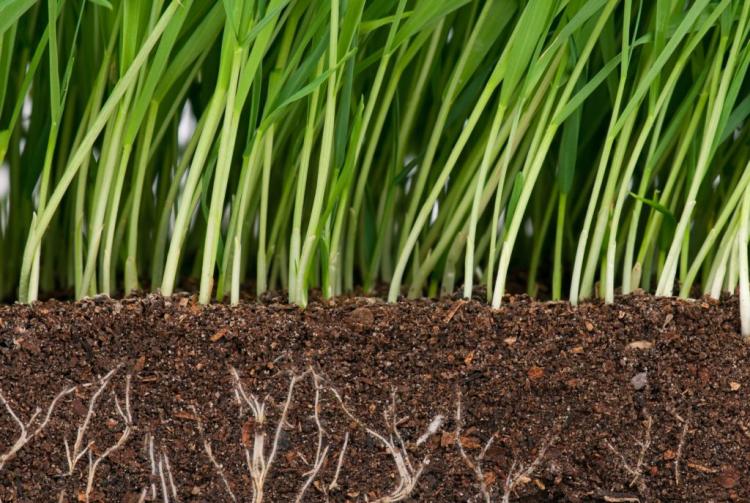
- The natural long-term effect, conversion depending on temperature and humidity largely prevents a release from taking place if there is no plant growth
- Production is less energy-intensive and therefore more ecologically justifiable since renewable raw materials are used instead of fossil deposits
- Can also be used as a liquid fertilizer
- Also available vegan, i.e. animal-free
You might so like: What is topsoil?
Disadvantages of organic fertilizers
- Nutrient concentration lower than in mineral fertilizers
- Insufficient potassium content in some products; in this case, this must be supplemented with minerals
- The slow implementation enables short-term or timely fertilization only to a small extent and with only a few products (e.g. animal meal and organic liquid fertilizer with faster implementation)
- Weather-dependent release takes place differently: Cold soils in spring can experience a nutrient deficiency, in autumn leaching of nitrogen, in particular, is possible when the soil is still warm and rainy
- Prices are often a little higher than those of mineral fertilizers
Tip: What significance does the improvement of soil properties and the formation of humus have for you as a user? A humus-rich soil offers the optimal growth conditions for most garden plants. It has to be watered less often because it can store a lot of water. Due to the elasticity of the humus crumbs, it always remains loose and allows the roots to penetrate deeply. The soil can also store many nutrients and the supply is always even. And these are just a few of the advantages that you can enjoy from humus garden soil.
Organic fertilizer vs. mineral fertilizer
The direct comparison of organic and mineral fertilizers shows the differences even more clearly.
| Fertilizer property | Organic fertilizer | Mineral fertilizer |
|---|---|---|
| Effective speed | Slow to medium | Fast |
| Nutrient release | Slowly flowing | Concentrated |
| Nutritional content | Low to high | Medium to high |
| Promotion of soil life | Yes | No |
| Promotion of humus formation | Strong | Little to no |
| Preservation/improvement of the soil structure | Yes | No |
| Application security | High | Low |
| Risk of washout | Low | High |
| Influencing the pH value | No | Depending on the fertilizer used |
| Release depending on the weather | Yes | No |
| price | Higher | Less |
Tip: Mineral fertilizers can affect the pH of the soil. For example, ammonium nitrogen leads to a decrease, whereas nitrate-nitrogen leads to an increase in the pH value. Complete fertilizers and other mixtures are composed in such a way that there is no significant change in the pH value. This danger is only given when fertilizing individual nutrients.
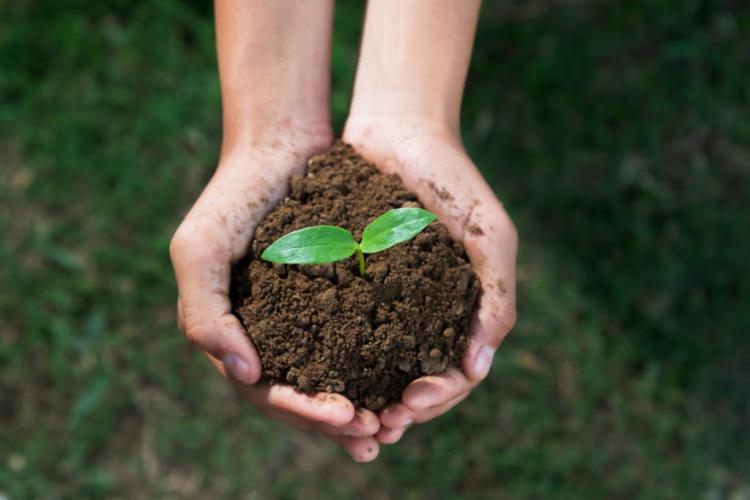
Summary: Organic vs. Mineral Fertilizer
- Organic fertilizers have a slower rate of action and release than mineral fertilizers
- Organic fertilizers promote soil life and humus formation, which improves the soil structure
Organic-mineral fertilizer
Organic-mineral fertilizers are fertilizers that contain components of both types of fertilizer. This means that they represent a compromise that is also reflected in their properties: Their speed of action and the concentration of nutrients they contain can be quite high, and they are released both in the short and long term. They promote life in the soil but contribute significantly less to humus formation than purely organic fertilizers. As they contain mineral components, they can be washed out and over-fertilized. However, the levels of mineral nutrients are lower, so the damage is limited. The price of organic-mineral fertilizers can be in the medium to very high range and is often dependent on the manufacturer and the area of application.
Summary: Organic-mineral fertilizer
- Organic-mineral fertilizers contain both organic and mineral ingredients
- The combination of the opposing properties creates a fertilizer with some advantages and few disadvantages in terms of humus formation, speed, and duration of action or the risk of leaching

Buy organic fertilizer: examples
Organic fertilizers have found their way into all areas and are enjoying increasing popularity. Here are some examples of organic fertilizers in the most important areas of application.
Organic lawn fertilizer
Organic lawn fertilizers have the advantage that they allow even growth due to their slow release. Basically, however, lawns require less potassium in summer than in autumn and winter. The autumn fertilization is therefore carried out with an increased potassium content, which can be found, for example, in our special Gardender organic autumn lawn fertilizer. This is of purely vegetable origin and therefore also suitable for users who are uncomfortable with the smell of animal meal and animal excrement.
Organic slow-release fertilizer
Organic fertilizers have a natural long-term effect. They are particularly user-friendly if they provide nutrients for plants quickly after application. Horn shavings are used in many places: They mainly contain nitrogen and are often offered at very low prices by various manufacturers. However, since these products hardly contain any other nutrients, they should be fertilized in addition to avoid the malnutrition of the plants.
Organic complete fertilizer
A complete fertilizer must contain at least the three main nutrients nitrogen, phosphorus, and potassium to bear this name. Organic fertilizers usually also contain many other nutrients, but only in small or very small amounts. Our Gardender universal fertilizer is also a primarily organic complete fertilizer, which is even animal-free and therefore very environmentally friendly. The same applies to our Gardender organic flower fertilizer, which supplies balcony and summer flowers as well as free-flowering herbaceous beds with long-term and environmentally friendly nutrients.
Organic liquid fertilizer
Liquid fertilizers have the advantage that they work particularly quickly. This also applies to organic liquid fertilizers, but unfortunately, these cannot be used as foliar fertilizers without exception. Therefore, pay close attention to the instructions for use on the packaging. Compared to an organic solid fertilizer, the proportion of organic matter in liquid fertilizers is of course marginal.
Organic phosphorus fertilizer
When one speaks of organic phosphorus fertilizer, what is usually meant is the so-called guano. The high phosphorus and nitrogen content in the limestone of South American coasts, which has been altered by seabird excretions, was discovered in the 19th century. This resulted in increased use of this mixture of excrement and lime as nitrogen and phosphorus fertilizer in agriculture. Pure guano fertilizer contains nitrogen, phosphorus, and potassium in a ratio of around 3: 5: 1. However, since this ratio is not ideal for plants, it is usually offered in mixtures with other organic fertilizers.

Bat guano is made in a similar way to sea bird guano. This is mined in caves inhabited by bats in Spain, Italy, and America. This bat guano fertilizer contains nitrogen, phosphorus, and potassium in a ratio of 4: 8: 1 and is therefore hardly suitable for supplying plants on its own. In addition, the harvest of bat guano is very controversial due to the disturbance of the bats in their refuge.
Organic fertilizer in agriculture
The organic fertilizers used in agriculture are usually those that fall into the “farm manure” category. What is meant here is that they are products of livestock farming and arise in the operation of fattening animal stalls. Sewage sludge from wastewater management can also be used in some crops. Manure, which is a combination of liquid and solid excrement as well as litter material such as straw, is considered a particularly valuable fertilizer. The urine excreted by livestock, which contains almost only nitrogen and potassium, is called liquid manure. Manure, in turn, is the mixture of excrement and urine and thus forms a kind of “middle ground” between manure and liquid manure. The nutrient content can vary greatly depending on the species.
By the way: The major problems of nitrate pollution in groundwater resources are the result of livestock farming, which is carried out too intensively, especially in Lower Saxony. Because while fields and fields do not require fertilization in the cold season, the cattle naturally continue to produce excrement and urine. If this is applied without the plants being able to absorb the nitrogen it contains, nitrate is washed out into the groundwater. With the new Fertilizer Ordinance, which came into force in 2018, prohibition periods now apply to protect the groundwater in winter.
Make organic fertilizer yourself
If you run a compost heap with nutrient-rich material such as vegetable scraps, lawn clippings, or the bedding of your pets, you will receive a potent fertilizer after at least two years. However, the production is very tedious and the large volume of the end product sometimes interferes with use. That’s why you will find two simple recipes below to make organic fertilizers yourself.
Organic fertilizer made from straw
The composting of straw turns difficult to decompose material in combination with a very nutrient-rich fertilizer into a valuable mixture that forms humus and supplies nutrients.
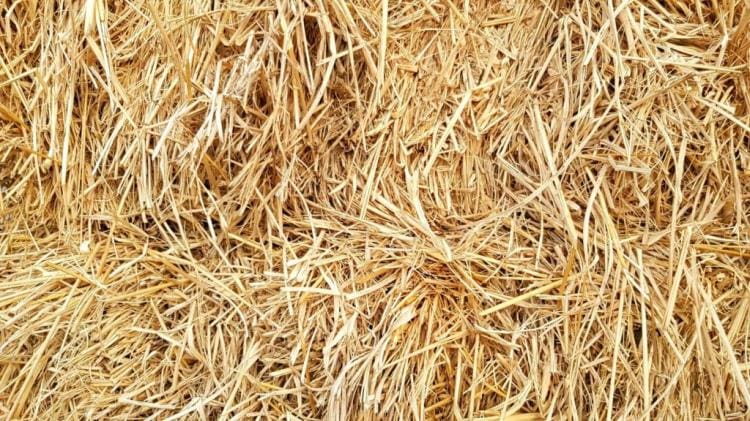
This is how you succeed in straw composting:
- Spread a 20 cm thick layer of straw in a box on a compost heap or a shady place (e.g. stable building, shed, or garage)
- Moisten the straw until it is completely soaked
- Sprinkle or douse the straw with a nitrogen-rich fertilizer. This can also only contain nitrogen
- Lay several 20 cm thick layers of straw on top of each other, which you also moisten and fertilize
- From now on, mix the layers once a month
- After a few months, the straw will have rotted away and a whitish coating may have formed. You can now use it to fertilize the soil and plants
Manure from farmyard manure
With a large tub or masonry bucket, a fine-meshed potato net, some manure, ash, and rainwater, an effective liquid fertilizer can be made that contains all three main nutrients.

- Use well-rotted manure. It should be dry and crumbly and no longer smell unpleasant.
- Mix wood ash with the manure to increase the potassium content of the liquid fertilizer that will be used later.
- Pour the mixture into the potato net. This is tightly knotted and hung in the container with rainwater. A whole potato net is enough for a ton with a capacity of 200 liters.
- Wait a few weeks stirring occasionally. If the liquid inside the bin becomes clear, the production is successful.
- Use the liquid fertilizer only in diluted form. The finished fertilizer mixture should be about the color of weak black tea.
